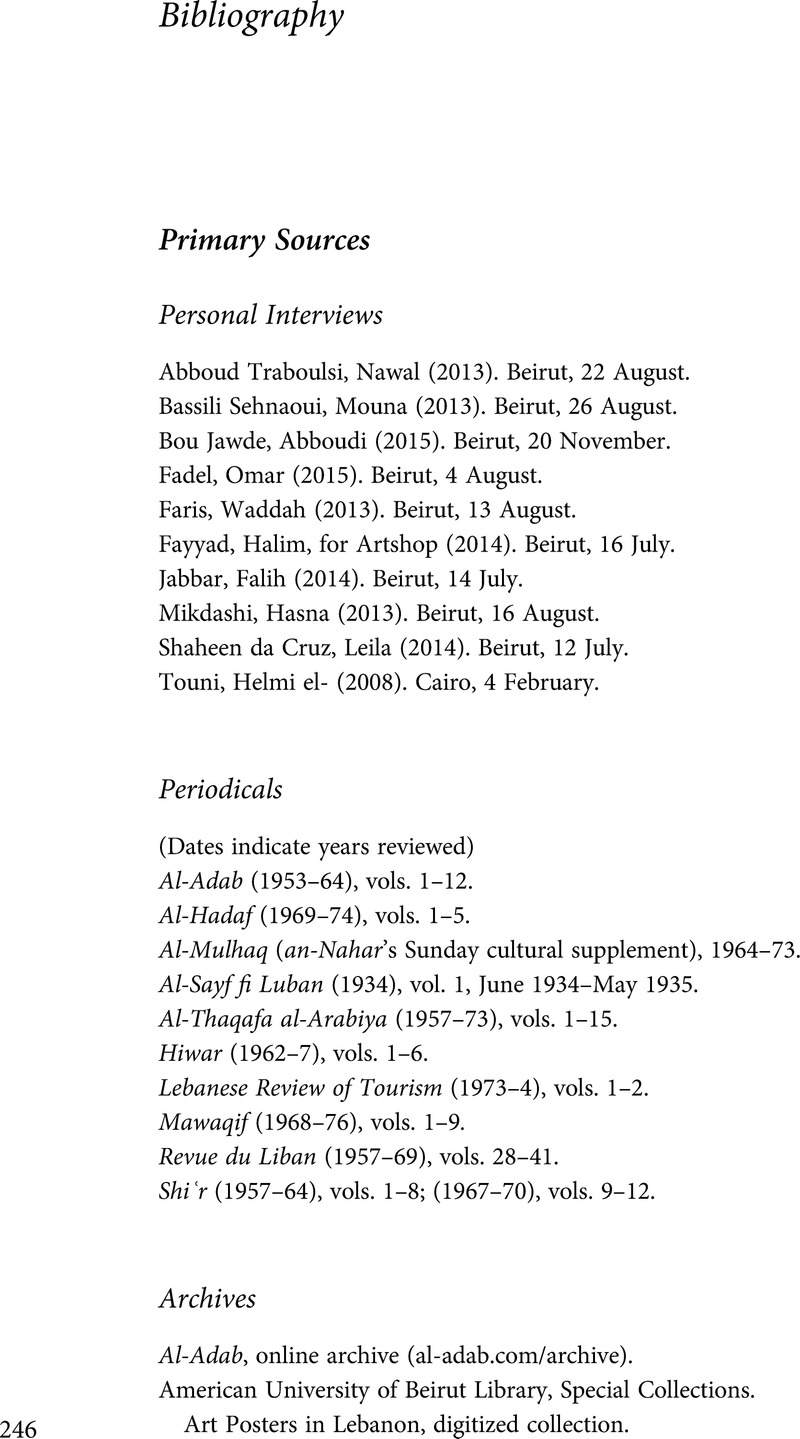Book contents
- Cosmopolitan Radicalism
- The Global Middle East
- Cosmopolitan Radicalism
- Copyright page
- Dedication
- Contents
- Plates
- Figures
- Preface and Acknowledgements
- Note on Transliteration and Translation
- Introduction
- 1 Dislocating the Nation
- 2 The Hot Third World in the Cultural Cold War
- 3 The Visual Economy of ‘Precious Books’
- 4 Ornament Is No Crime
- 5 Art Is in the ‘Arab Street’
- 6 Draw Me a Gun
- Conclusion
- Bibliography
- Index
- Plate Section
- References
Bibliography
Published online by Cambridge University Press: 20 July 2020
- Cosmopolitan Radicalism
- The Global Middle East
- Cosmopolitan Radicalism
- Copyright page
- Dedication
- Contents
- Plates
- Figures
- Preface and Acknowledgements
- Note on Transliteration and Translation
- Introduction
- 1 Dislocating the Nation
- 2 The Hot Third World in the Cultural Cold War
- 3 The Visual Economy of ‘Precious Books’
- 4 Ornament Is No Crime
- 5 Art Is in the ‘Arab Street’
- 6 Draw Me a Gun
- Conclusion
- Bibliography
- Index
- Plate Section
- References
Summary

- Type
- Chapter
- Information
- Cosmopolitan RadicalismThe Visual Politics of Beirut's Global Sixties, pp. 246 - 269Publisher: Cambridge University PressPrint publication year: 2020

